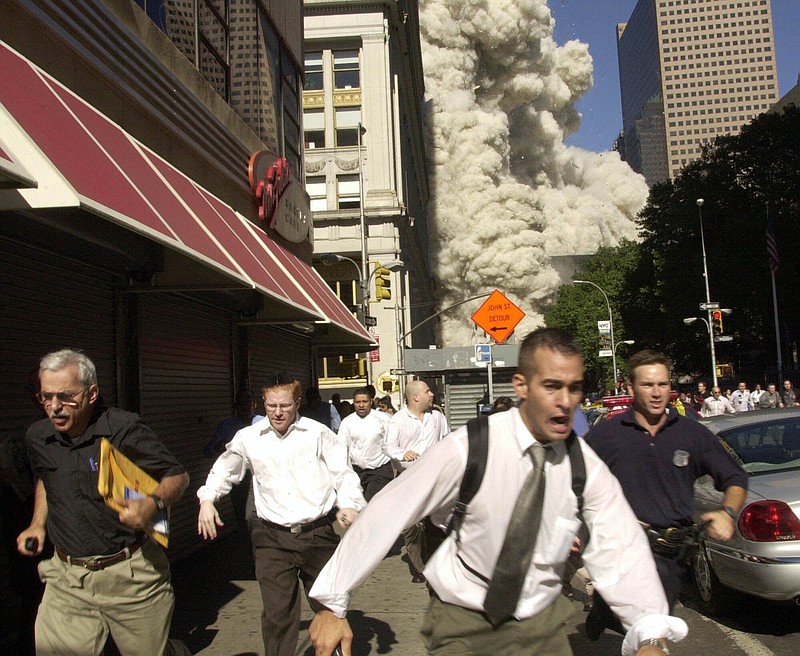Read more
Deadly Attacks Since 9/11
Americans hear and read and talk a lot about terrorists - primarily foreign terrorists such as Al Qaeda or ISIS.
Certainly watching the twin towers of the World Trade Center fall and seeing the aftermath of the Boston Marathon was frightening. But in the 14 years since the Sept. 11, 2001, attacks by Al Qaeda, nearly twice as many people have been killed on U.S. soil by homegrown terrorists - white supremacists, anti-government fanatics and other non-Muslim extremists - than by radical Muslims. Here are the numbers: 48 have been killed by extremists who are not Muslim, compared with 26 by self-proclaimed jihadists, according to a count by New America, a Washington research center.
Looking not just at deaths, but at incidents, the ratio is even more startling: Seven deadly jihadist attacks, compared to 19 deadly far right-wing, home-grown attacks.
Charleston's Bible study attack was the latest, when a self-professed white supremacist killed people in a Wednesday night service at the historic and community-revered Emmanuel African Methodist Episcopal Church. Yet it was but one of a string of attacks by Americans espousing racial hatred, hostility to government and theories such as those of the "sovereign citizen" movement, which denies the legitimacy of most statutory law.
These assaults by fellow Americans claimed the lives of police officers, members of racial or religious minorities and ordinary people in the wrong places at the wrong times.
One of the earliest incidents was quite close to home - the July 2008 Knoxville church shooting in which Jim David Adkisson killed two people and injured seven others during a service at the Tennessee Valley United Unitarian Church. The shooter left a letter in his SUV that expressed hatred toward liberals and gays. He pleaded guilty in February 2009.
Other attacks ranged from Oklahoma to Massachusetts, Arizona to Florida, and many locales in between.
A New York Times story last week about the new report noted that if the numbers were surprising to the public, they did not constitute new news to police officers. A survey asked 382 police and sheriff's departments nationwide to rank the biggest threats from violent extremism in their jurisdiction. About 74 percent listed anti-government violence, while 39 percent listed "Al Qaeda-inspired" violence, according to the researchers, Charles Kurzman of the University of North Carolina and David Schanzer of Duke University.
"Law enforcement agencies around the country have told us the threat from Muslim extremists is not as great as the threat from right-wing extremists," Kurzman told The New York Times.
As for the public misconceptions, the reasons are varied, according to experts.
Shifting definitions and judgment calls may be part of the confusion. If terrorism is defined as ideological violence, should an attacker merely ranting about religion, politics or race be considered a terrorist? The New York Times story noted a man in Chapel Hill, N.C., who was charged with fatally shooting three young Muslim neighbors, had posted angry comments of religion, but he also had a history of outbursts over parking issues. The Times said New America does not include that attack in its count of home-grown terrorist assaults.
The media also takes an arrow in aiding misconceptions: "With non-Muslims, the media bends over backward to identify some psychological traits that may have pushed them over the edge. Whereas if it's a Muslim, the assumption is that they must have done it because of their religion," Abdul Cader Asmal, a retired physician and a longtime spokesman for Boston's Muslim community, told New York reporters.
Conservative politicians and lawmakers also caught some blame: On several occasions in recent years, efforts by government agencies to conduct research on right-wing extremism ran into resistance from Republicans, who suspected "an attempt to smear conservatives," the Times states.
A 2009 report by the Department of Homeland Security, which warned that an ailing economy and the election of the first black president might prompt a violent reaction from white supremacists, was withdrawn in the face of conservative criticism.
The bombing of Oklahoma City's federal building in 1995 had a 20th anniversary in April.
Early speculation was that the Oklahoma blast was another attack by foreign militants, but it turned out to be the work of Timothy McVeigh, an anti-government extremist still angry about Waco. He killed 168 people, including 19 children, and his work remains the second-deadliest terrorist attack in American history, dwarfed only by the attacks that set all this fear and hate in motion on Sept 11, 2001. The attacks that day ended the lives of nearly 3,000.
In the years since, we've learned a good bit about fear, but apparently not much about the origins and motivations of terrorism.
